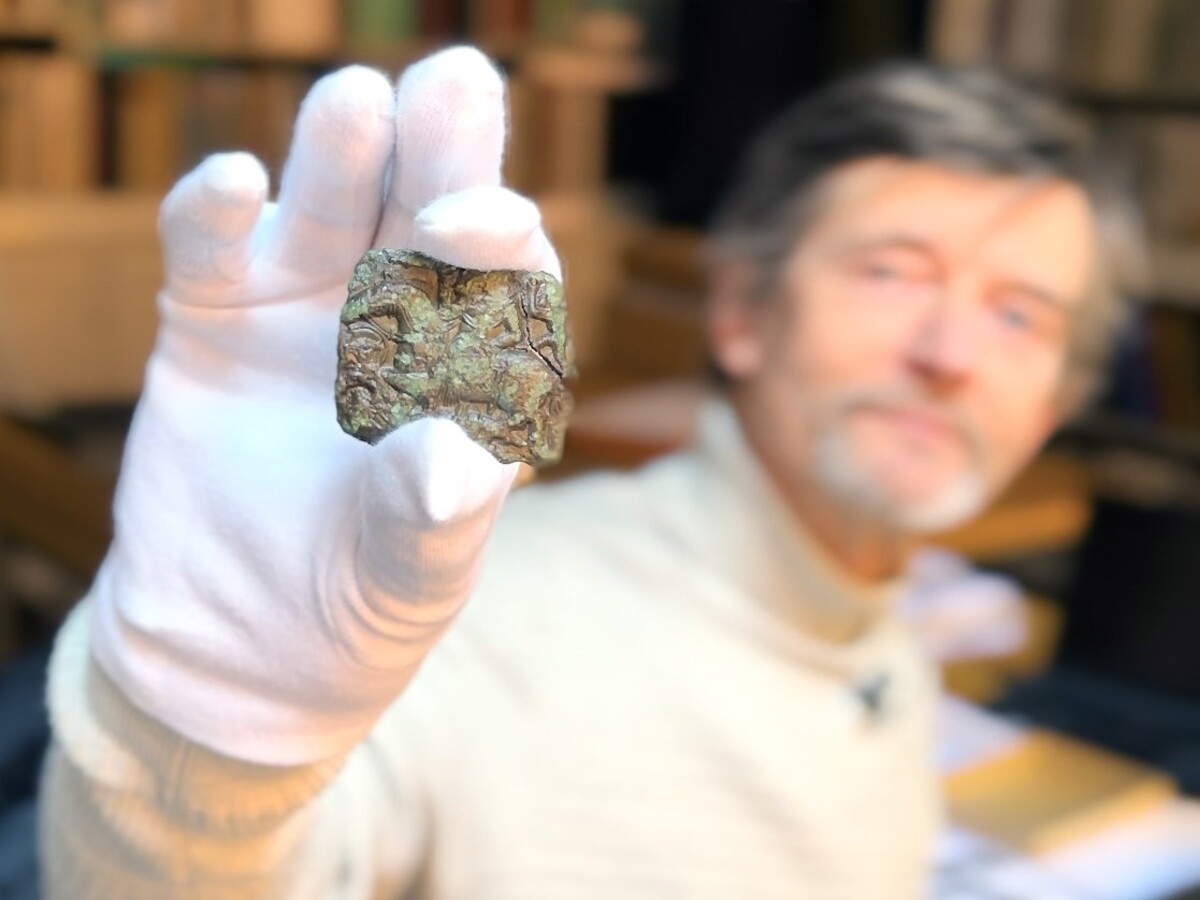A small metal object accidentally discovered with a metal detector on the Danish island of Tåsinge could have revolutionary implications for the history of northern Europe. It is a stamp, a decorative mold used to imprint motifs on metal sheets, that bears a resemblance to the depictions engraved on thehelmet of Sutton Hoo, one of Britain’s best-known archaeological finds, considered by many to be the... Tutankhamun of England. As of Tuesday, April 1, the stamp was on display at the National Museum of Denmark, ready to be observed and studied. Until now, the helmet had been attributed to a Swedish Uppland production, where similar motifs of armed horsemen had been found. But the exceptional detail of the Tåsinge stamp is forcing scholars to revise this theory: the helmet may have been forged not in Sweden, but in the Danish region of South Funen.
“The Sutton Hoo helmet is a world icon,” says National Museum of Denmark curator Peter Pentz. “It is a national treasure for the British, on a par with the sun chariot for the Danes. It would be sensational if this helmet, obviously worn by someone of great importance, perhaps a king, was made in Tåsinge. This indicates a possible Danish connection to the helmet, but also to the person who wore it and was buried with it. It is still too early to draw conclusions, but it indicates that Denmark played a more important role in this period than previously thought. We often attribute the unification of the kingdom to Herald I of Denmark in the 10th century, but Denmark could have been relatively united and powerful as early as 600 A.D. It is a discovery that challenges previous theories, and that is always exciting.”

Direct comparisons between the Danish stamp and Sutton Hoo’s best-known helmet motif, that of a warrior on horseback with a man lying under the horse, revealed striking correspondences. Curator Peter Pentz, observed similarities in the most minute details: from the cuff at the rider’s wrist, to the shape of the horse’s harness, via the reins, the sword protruding from under the shield, and the circles at the man’s feet on the ground.
Unlike the Swedish motifs, the Danish ones, and in particular the Tåsinge stamp, do not feature decorative elements such as boars or birds of prey on the helmets, in line with the depictions of the helmet found in England. The Sutton Hoo helmet was discovered in 1939 in a ship-shaped tomb in southeastern England. The grave goods, worthy of a ruler, dated to the early 7th century. The helmet was shattered into hundreds of fragments, but archaeologists were able to partially reassemble it, reconstructing some of its decorative scenes.
In addition to the main knight motif, there is a second knight on the helmet, which can be identified only thanks to a few fragments. A detailed analysis of the latter, however, showed an even closer connection with the Danish stamp than the completely reconstructed motif. Two elements stand out clearly: the outline of the horseman’s foot, identical on the stamp and the fragment, and the edge of the shield of the man on the ground, also perfectly coincident.
For Peter Pentz, the similarities found can no longer be attributed to mere mutual inspiration. When details coincide so precisely, it is plausible that the helmet’s stamp and decorations came out of the same artisan workshop. It is therefore possible that Sutton Hoo and Tåsinge are linked by a direct connection, with Danish craftsmen at the origin of the helmet buried in England. The hypothesis will be tested in the coming months through high-precision 3-D scanning, which will compare the stamp with helmet fragments to scientifically verify exact compatibility.
If the Danish origin of the helmet is confirmed, the entire narrative of the balance of power in northern Europe in the 7th century would have to be revised. The idea that early medieval England and Sweden were outposts of a central Danish power is not entirely new, but it has always lacked concrete evidence. The Tåsinge metal stamp may be the first material clue that can convincingly support it. The stamp, only 4.5 centimeters wide, might actually seem insignificant, but it tells a much larger story.
 |
| A stamp discovered in Denmark reopens the mystery over Sutton Hoo's helmet |
Warning: the translation into English of the original Italian article was created using automatic tools. We undertake to review all articles, but we do not guarantee the total absence of inaccuracies in the translation due to the program. You can find the original by clicking on the ITA button. If you find any mistake,please contact us.